Tools Required
Visual Inspection Procedure
- Inspect the cylinder head for the following:
| • | Cracks, damage or pitting in the combustion chambers. |
| | Important: DO NOT machine the camshaft bearing journals.
|
| • | Scoring of the camshaft bearings and/or the journals. If the camshaft bearing journals appear to be scored or damaged, you must replace the cylinder head. |
| • | Debris in the oil galleries. Continue to clean the galleries until all debris is removed. |
| • | Coolant leaks or damage to the deck face sealing surface. If coolant leaks are present, measure the surface warpage as described under Cylinder Head Measurement. |
| • | Damage to any gasket surfaces |
| • | Damage to any threaded bolt holes |
| • | Burnt or eroded areas in the combustion chamber |
| • | Cracks in the exhaust ports and combustion chambers |
| • | External cracks in the water chamber |
| • | Restrictions in the intake or exhaust passages |
| • | Restrictions in the cooling system passages |
| • | Rusted, damaged, or leaking core plugs |
- If the cylinder head is cracked or damaged, it must be replaced. No welding or patching of the cylinder head is recommended.
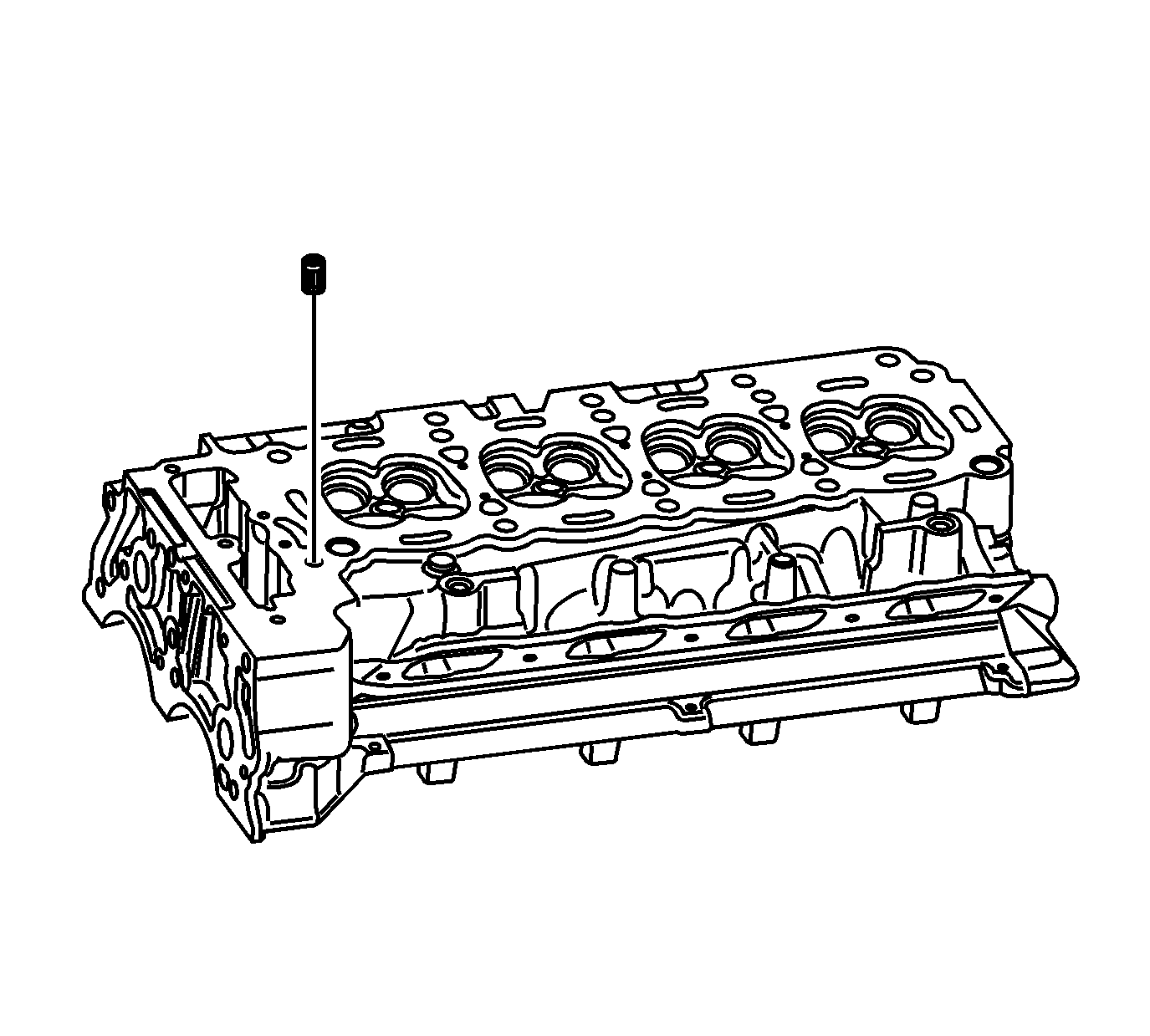
- The oil passage from the left cylinder head deck face that feeds the stationary
hydraulic lifters (SHLAs) and the camshafts has a pressed-in restrictor. The orifice within the restrictor is 3 mm (0.1181 in). DO NOT remove the restrictor. Ensure the restrictor and oil passage are clean and free of any debris.
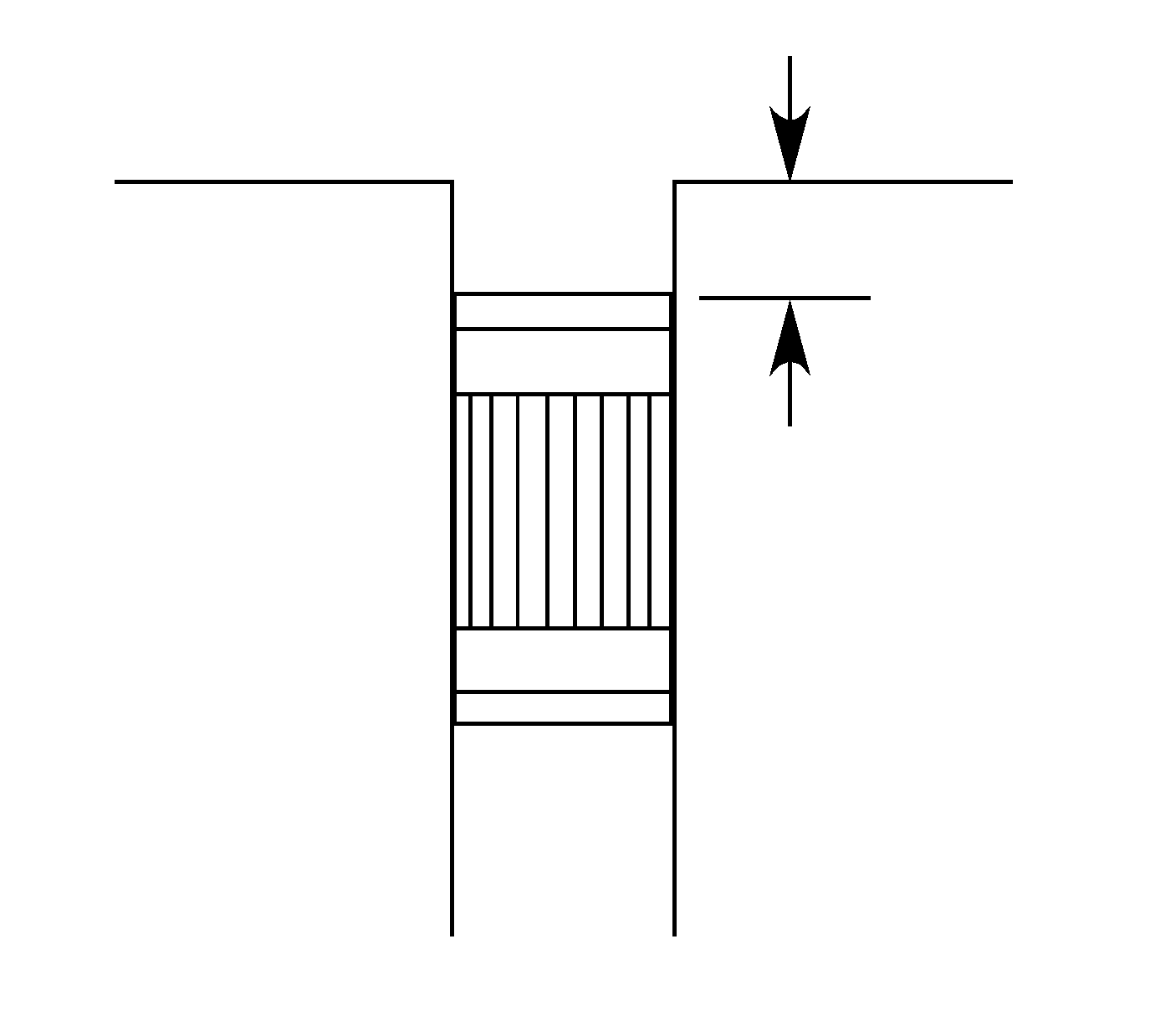
- Ensure the left cylinder head oil gallery
restictor is installed to the proper depth of 1.5-5.5 mm (0.059-0.216 in).
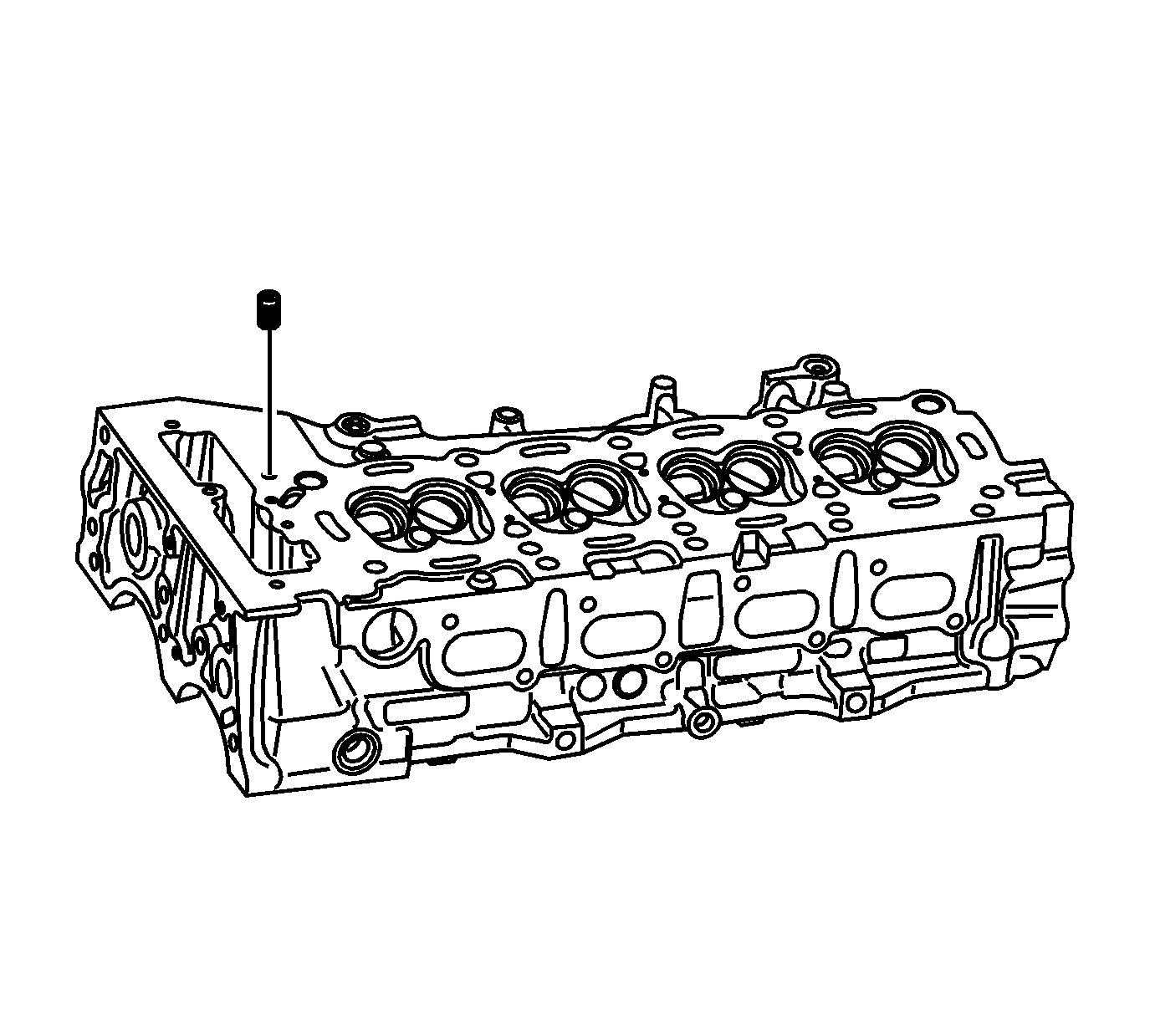
- The oil passage from the right cylinder head deck face that feeds the stationary
hydraulic lifters (SHLAs) and the camshafts has a pressed-in restrictor. The orifice within the restrictor is 3 mm (0.1181 in). DO NOT remove the restrictor. Ensure the restrictor and oil passage are clean and free of any debris.

- Ensure the right cylinder head oil
gallery restictor is installed to the proper depth of 1.5-5.5 mm (0.059-0.216 in).
Cleaning Procedure
- Clean all cylinder head surfaces with non-corrosive solvent.
Caution: Refer to Safety Glasses Caution in the Preface section.
- Blow out all the oil galleries using compressed air.
- Remove any carbon deposits from the combustion chambers using the
J 8358
.
- Remove any gasket material with the
J 28410
.
- Clean any debris or build-up from the lifter pockets.
- Inspect the cylinder head again for the items noted under Visual Inspection.
Cylinder Head Measurement
Notice: Refer to Fastener Notice in the Preface section.
- Measure the camshaft clearance specification using the following procedure:
| 1.1. | Install the camshaft caps. |
| 1.2. | Install the camshaft caps bolts. |
Tighten
Tighten the camshaft bearing caps bolts to 5 N·m (44 lb in).
| 1.3. | Measure the camshaft bearings using an inside micrometer. |
| 1.5. | Subtract the camshaft journal diameter from the camshaft bearing diameter in order to obtain the running clearance. |
| 1.6. | If the running clearance exceeds the specifications and the camshaft journals are within specification, replace the cylinder head. Refer to
Engine Mechanical Specifications
. |
- Measure the camshaft thrust specification using the following procedure:
| 2.1. | Inspect each camshaft cap thrust surface for excessive scoring/wear. |
| 2.3. | Install the intake and exhaust camshafts in the cylinder head. |
| 2.4. | Install the camshaft caps. |
| 2.5. | Install the camshaft caps bolts. |
Tighten
Tighten the camshaft bearing caps bolts to 5 N·m (44 lb in).
| 2.7. | If the camshaft thrust bearing clearance is not to specification repair or replace the cylinder head. |
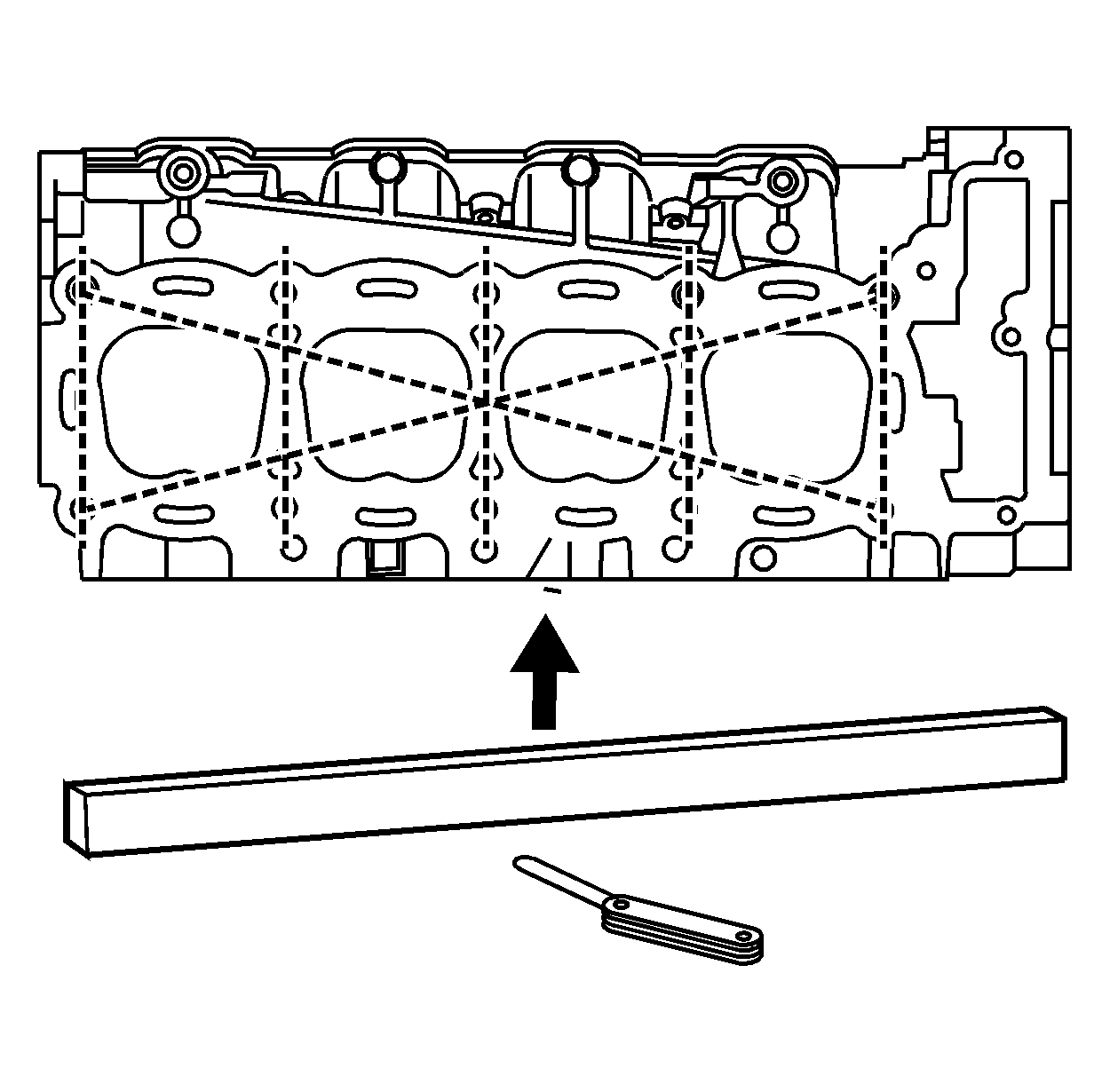
- Measure the cylinder head flatness using the following procedure:
| 3.1. | Clean any remaining head gasket material from the cylinder head face. |
| 3.2. | Place a straight-edge diagonally across the cylinder head face surface. |
| 3.3. | Measure the clearance between the straight-edge and the cylinder head using a feeler gage at four points along the straight-edge. |
| • | If warpage is less than 0.05 mm (0.002 in), the cylinder head surface does not require resurfacing. |
| • | If warpage is between 0.05-0.20 mm (0.002-0.008 in), the cylinder head must be resurfaced. |
Valve Guide Measurement Procedure
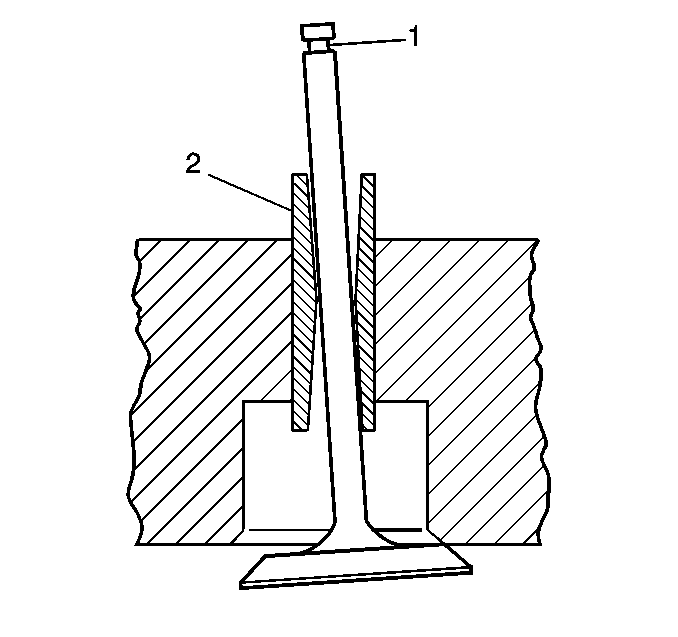
- Measure the valve stem (1)-to-guide (2) clearance as follows:
| • | Excessive valve stem-to-guide clearance may cause an excessive oil consumption and may also case a valve to break. Insufficient clearance will result in noisy and sticky functioning of the valve and will disturb the engine assembly smoothness. |
| • | Clamp the
J 8001
to the cylinder head at the camshaft cover rail. |
| • | Locate the dial indicator so that the movement of the valve stem from side to side, crossways to the cylinder head, will cause a direct movement of the indicator stem. |
| • | The dial indicator stem must contact the side of the valve stem just
above the valve guide. |
| • | Drop the valve head about 1.6 mm (0.0064 in) off the valve seat. |
| • | Use light pressure when moving the valve stem from side to side in order to obtain a clearance reading. |
- If the clearance for the intake valve is greater than 0.11 mm (0.0045 in) and a new standard diameter valve stem will not bring the clearance within specifications, the cylinder head must be replaced.
- If the clearance for the exhaust valve is greater than 0.12 mm (0.005 in) and a new standard diameter valve stem will not bring the clearance within specifications, the cylinder head must be replaced.
- Valve guide wear at the bottom 10 mm (0.39 in) of the valve guide is not significant to normal operation.






